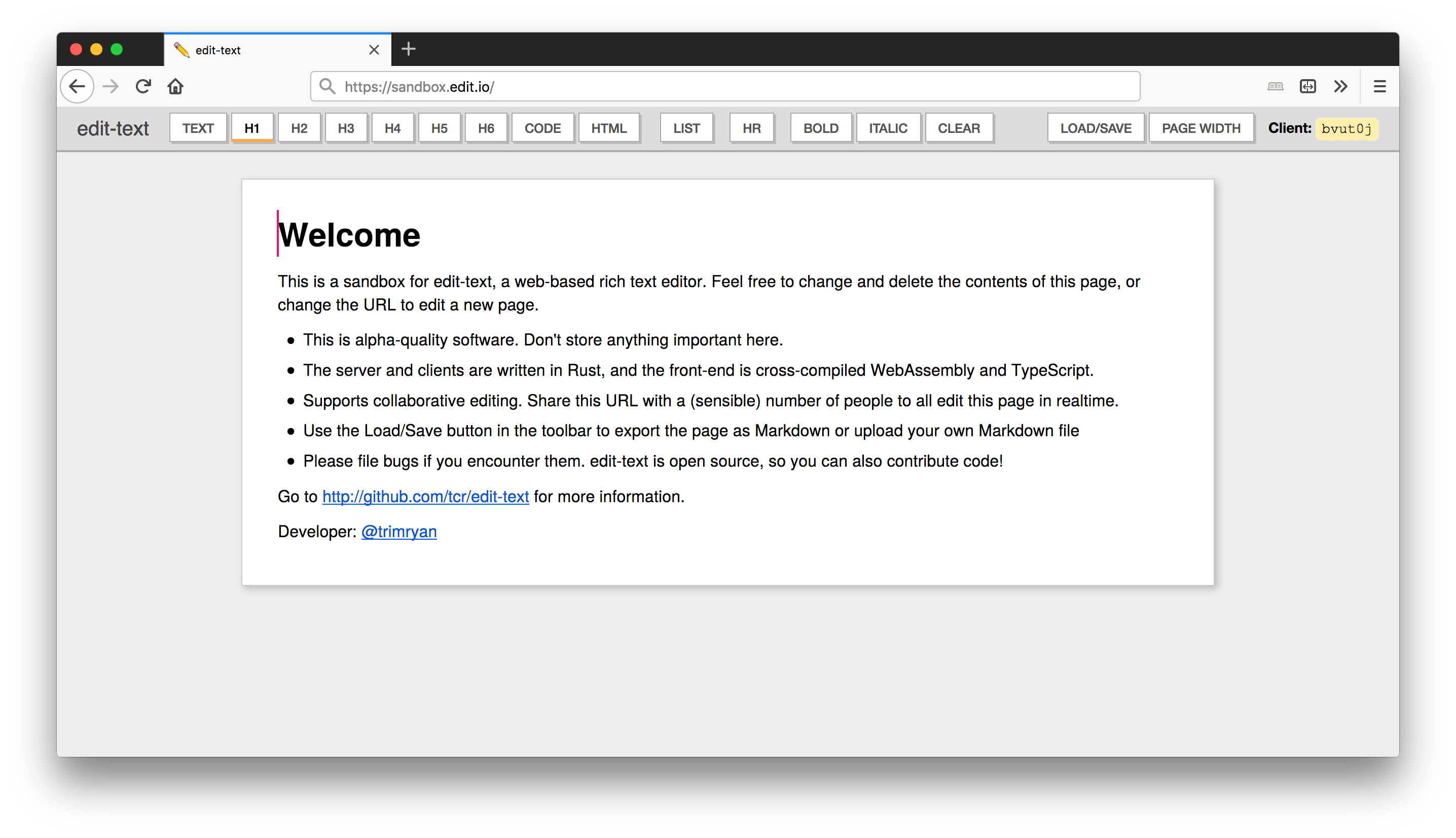edit-text is a collaborative text editor with Markdown import and export. Both the server and client are written in Rust, and its frontend is cross-compiled WebAssembly and TypeScript.
✏️ Use edit-text online in the edit.io sandbox.
📚 Read "Getting Started" instructions in the edit-text documentation.
Or clone this repo and run: ./tools frontend-build && ./tools server --open
This is alpha-quality software.
Apache-2.0

